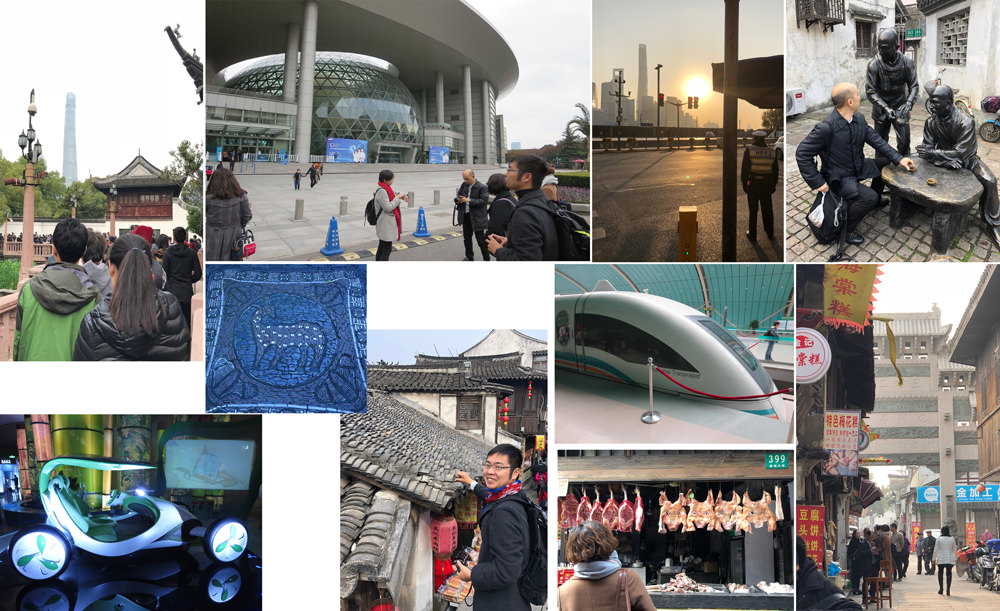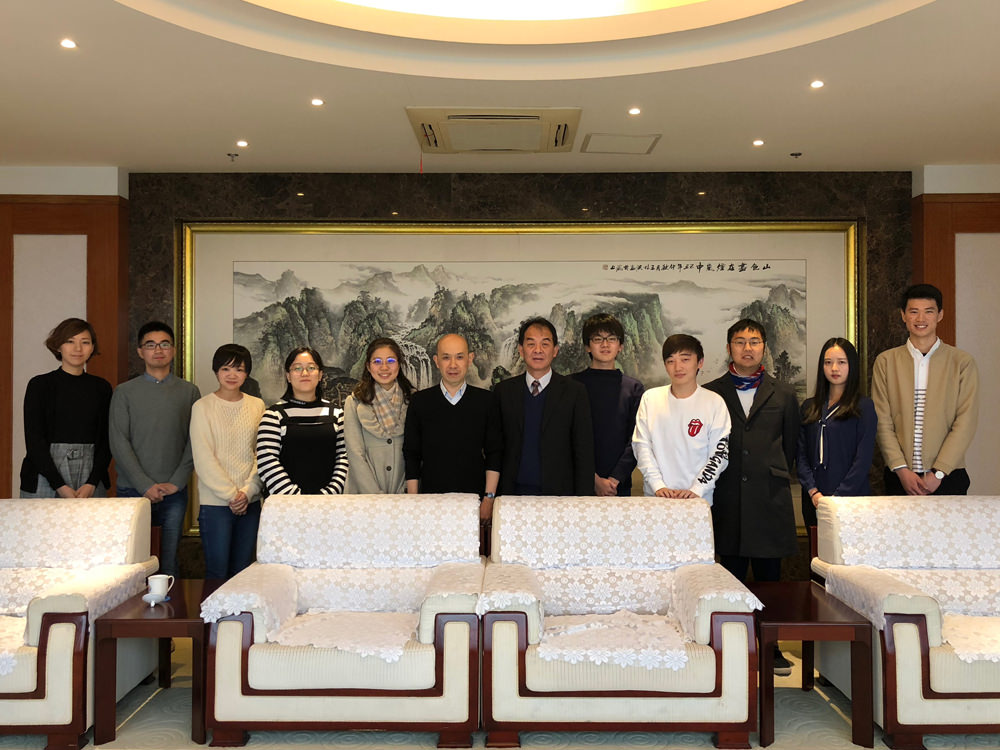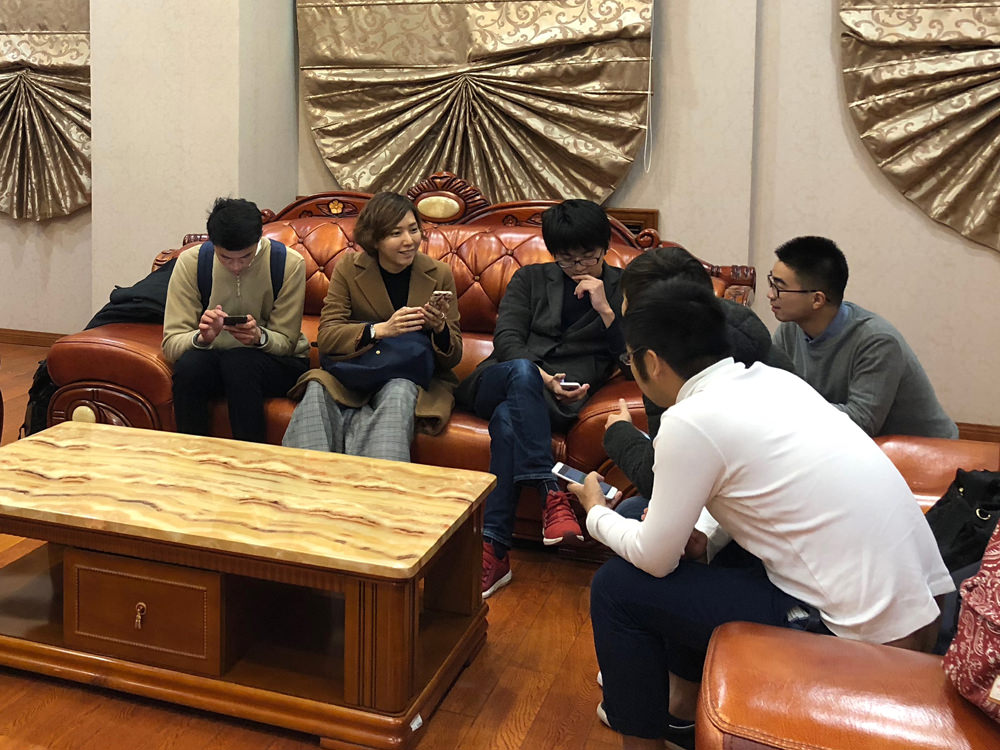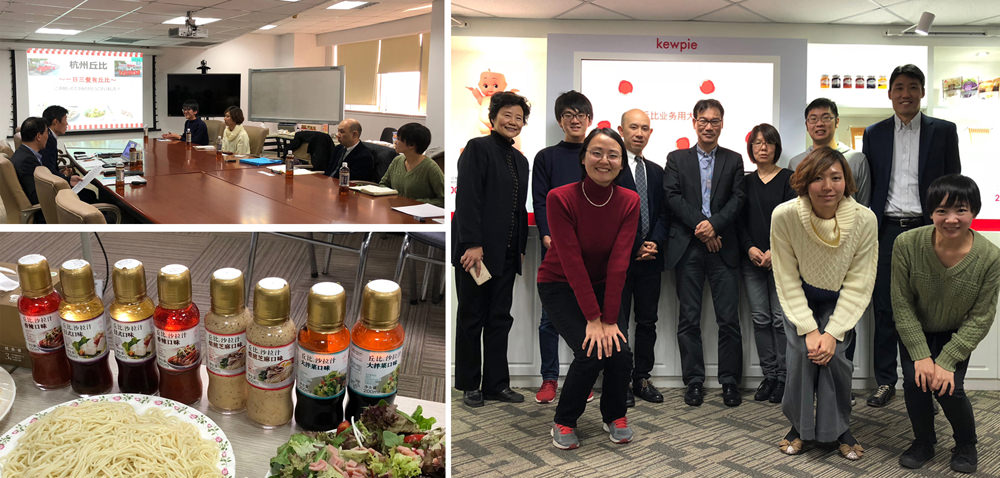
Report: Study Trip to Shanghai, China JIN YAN
- Time and Date
- December 3 (Sun) to December 5 (Tue), 2017
- Venue
- Shanghai Ocean University, Hangzhou Kewpie Corporation
- Organized by
- Educational Project 3, “Science, Technology, and Inclusive Society”, Integrated Human Sciences Program for Cultural Diversity, The University of Tokyo
Introduction
In December 2017, study tour was conducted in Shanghai. Accordingly, we mainly visited Shanghai Ocean University (SHOU) and the Hangzhou Kewpie Corporation to learn how economic growth and technological advancement sustain the development of this megacity.
China has seen stable economic growth under its structural reform named One Belt, One Road policy, and so on. Although rapid technological development occurs in the background, such technological enhancements are even more quickly accepted by the citizens and embedded in their daily lives, which is certainly noteworthy. In particular, the rapid diffusion of services that can be accessed using smartphones is astonishing. Nowadays, payment using QR code is enabled in not only major shops and restaurants but also small food stands in street corners in the urban areas of China; therefore, there is less need for citizens to carry cash with them while going out. In addition, people can request quick delivery services and cycle sharing using smartphones. Such technological innovations not only cause an increase in economic activities but also change the lifestyle of people. Moreover, a background of globalization is essential to realize this economic growth, similar to how new businesses and a new culture were created within Shanghai following the influx of foreign culture in the city since the prewar era.
During this study tour, I observed Shanghai from the perspectives of economic/technological development and people’s lifestyle. In this report, I briefly illustrate the ideas that were generated in our discussion with the students in SHOU and the cross-cultural cooperation that characterizes Kewpie.

Shanghai Ocean University
On day two of our study tour, we visited SHOU, observed the facilities available in the campus and had a discussion with the students.
The history of SHOU can be traced back to more than a hundred years. In 1912, the first domestic fishery school was established; it was renamed and transferred after the Battle of Shanghai and Cultural Revolution following which it developed into the present institution. Currently, SHOU offers interdisciplinary programs, including not only fishery science but also agriculture, chemistry, economy, law, and so on, and has more than 12,000 undergraduate and 2380 postgraduate students. In addition, research on marine resources development, genetics, and environment protection is carried out in the university. The students who attended our discussion were from different academic fields, such as law, marine politics, and food economy.
During the discussion, we asked SHOU students the reason for their decision to move to Shanghai for their studies. One of the students moved to Shanghai because his kin was there, whereas the others moved because the city offers a diverse culture, a broadminded society, convenient transportation facilities, and immense job opportunities
There is a key word that represents the lifestyle of people in urban cities in China: xiao zi (小资). Often, this word is translated as “petite bourgeoisie”; however, in recent Chinese society, it refers to the people who have no trouble living within their financial means and sustain a rich inner life. Xiao zi refers to neither the extremely wealthy nor the poor; such people balance he material and spiritual aspects of their daily lives. Shanghai, where economic growth is brisk and new culture is constantly being created, attracts young people who desire to realize the xiao zi lifestyle. The idea of orienting toward this “small capital” life may have become popular concurrently with the economic growth of the city.
During the discussion, we noted another impressive aspect: local students accept the transformation in their lifestyle brought about by technological developments, such as the implementation of QR code payment in Chinese urban cities, very positively. In Japan, as well, payment modes using smart devices have spread extensively; however, the majority of the small shops and restaurants continue to accept cash payments alone, due to which many people may feel unsafe if they do not carry cash when they go out. Compared to the students in Japan, the local students of Shanghai seemed to feel less hesitation regarding the use of the QR code payment mode. Since it is convenient and saves time, the students seemed to enjoy the merits of the QR code system. This high level of acceptance is not only because the technology has not caused any trouble to the users but also because the users’ life has become more productive due to this service, which enables them to realize the xiao zi lifestyle.




Kewpie
On day three of our study tour, we visited Kewpie and learned about the company’s story regarding its overseas expansion, fusion with the Chinese food culture, and the experiences of the Japanese in collaborating with local staff.
Since its expansion to China in 1993, Kewpie has been rapidly developing its products for the Chinese market. The share of mayonnaise in the preparation of food is much more for food services than for households: this disparity reflects Shanghai’s eat-out culture, whereby approximately 80 percent of people depend on restaurants or food delivery services.
In China, people often consume fruits salads instead of raw vegetables; this cultural characteristic motivated the company to produce different types of mayonnaise. A new product, “sweet taste” mayonnaise for fruits, has been developed by Kewpie, which has been successfully accepted by the Chinese food market. It tastes completely different from the mayonnaise sold in Japan in that the former does not ruin the sweetness of fruits, but rather enhances their taste. This collaboration of fruits and mayonnaise seems to symbolize the fusion of cultures.
With respect to overseas expansion, one of the most important concerns is how the company responds to the cultural differences in a local area. Kewpie’s company slogan, 楽業偕悦, implies the answer to this question. The slogan refers to sharing the same goal and collaborating with others, cherishing the individual’s motivation and power to enjoy work, sharing the same difficulties and challenges, and feeling the joy together. When we asked what “joy” or “pleasure” was shared by Japanese and Chinese employees, they answered that they both feel the growth of the business. During the very early stages of the expansion, the company experienced a deficit. However, Kewpie has gradually expanded its share of dressings and, today, it is one of the most famous dressing makers in China. Although both Chinese and Japanese workers share a common goal, they emphasized that the process for achieving their goal could vary. The workers of the company avoid one-way communication modalities, such as a command hierarchy, in order to vitalize the discussions in meetings. Respecting different ways of thinking while sharing a common goal can encourage multicultural symbiosis.
During this tour, I visited Shanghai for the first time in 10 years. Even I could notice the marked diversity of the food culture of this city. In particular, dressings/seasonings, which have long been considered to play a so-called “supporting role” in cooking, are currently bringing about an enormous change in the Chinese diet. There are many examples in history where the food culture transformed dramatically due to the introduction of seasonings from overseas, which is particularly true of “borderless” Shanghai.

Conclusion
In this report, I described the rapid economic growth and technological development in Shanghai and their relation to the lifestyle of citizens. Despite this significant development, the old Shanghai continues to exist. For example, Yu Garden, a place that we visited during our tour, has a gorgeous and sophisticated landscape, which showcases the long history of this city. At night, it is lighted up and blends beautifully with the nighttime landscape of modern buildings that populate the region. While we look back at this landscape, new questions arise: what types of ideas and lifestyles do people choose to maintain or relinquish when subjected to rapid changes? I intend to observe the future changes in this city, where various cultures coexist and technology is an integral part of people’s lives.
report date : December 5, 2017


